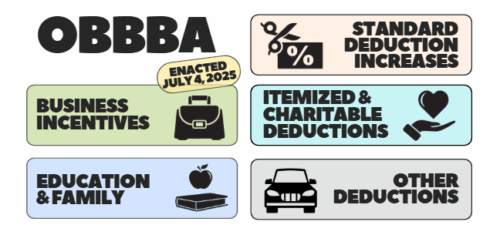
Year-end payroll processing involves many crucial tasks for HR managers and companies, often bringing a multitude of responsibilities, from calculating final payments to preparing tax documents. These tasks can include verifying employee information, reconciling payroll records, and submitting year-end tax filings.
This guide, designed to be your ultimate resource, will help you navigate year-end payroll processing efficiently, ensuring you cover all bases and maintain accuracy and compliance. Errors in year-end payroll processing can lead to financial penalties, employee dissatisfaction, and even legal issues, making accuracy and compliance crucial.
Start with a Detailed Year-End Payroll Processing Checklist
Begin your year-end payroll processing by creating a comprehensive checklist. This list should include all necessary tasks, such as verifying employee information, calculating final paychecks, and preparing tax forms.
A detailed year-end payroll checklist assists in maintaining organization so you don’t overlook any steps. Check out our Year-End Payroll and HR Guide for a thorough and downloadable checklist.
Verify Employee Information
Accurate employee information is essential for year-end payroll processing. Verify that you have the correct names, addresses, and Social Security numbers for all employees. Any discrepancies can lead to issues with tax filings and delays in distributing year-end documents.
Update any changes in employee status, such as promotions or terminations, so all records are current. By proactively managing these details, you can streamline the payroll process and minimize potential errors or delays.
Calculate Final Paychecks
Calculate all final paychecks accurately, accounting for any remaining vacation or sick days, bonuses, and other compensations. Double-check these calculations to prevent errors affecting your employees and financial records.
Proper calculation of final paychecks is vital to maintaining trust and accuracy in your payroll system. Furthermore, it reduces time spent on year-end tasks so that you can be more strategic.
Process Year-End Bonuses
If your company provides year-end bonuses, make sure to process them correctly. Employers must subject bonuses to payroll taxes and report them accurately. Decide whether to include bonuses in the regular payroll or issue them as separate payments.
Communicate clearly with your employees about the timing and taxation of their bonuses. By providing transparent guidance, you can help your employees better understand this process and reduce the potential for additional outreach.
Prepare and Distribute W-2 Forms
Preparing and distributing W-2 forms to employees is one of the most critical tasks in year-end payroll processing. You must report all employee wages, tips, and other compensations accurately.
The deadline for providing forms W-2 to employees is January 31, so plan accordingly to avoid any delays. Additionally, copies must be submitted to the Social Security Administration (SSA) by the specified deadline. The OBBBA may require new boxes or reporting categories for tipped wages and overtime premiums, so it’s essential to map payroll codes correctly.
Review and Reconcile Payroll Records
Review and reconcile your payroll records for the year so you have accurately recorded all payments, deductions, and taxes. By carefully examining these records, you can promptly identify and address any discrepancies before finalizing the year-end payroll procedures.
Reconciliation is crucial to maintaining the integrity and compliance of your financial records. Safeguarding against errors and discrepancies could potentially impact your organization’s financial stability.
Submit Year-End Payroll Tax Filings
In addition to handing out W-2 forms, you must submit several year-end tax documents to the IRS and state tax authorities. These documents include:
- Form W-3: This is the Transmittal of Wage and Tax Statements. It reports total employee wages, taxable wages, and taxes you withheld (local, state, and federal income tax, Social Security, and Medicare) for the calendar year.
- Form 940: This is the Employer’s Annual Federal Unemployment (FUTA) Tax Return. It reports your annual FUTA tax.
- Form 941: This is the Employer’s Quarterly Federal Tax Return). It reports income taxes, Social Security tax, or Medicare tax withheld from employee’s paychecks. Form 941 is also used to pay the employer’s portion of Social Security or Medicare tax.
Complete all payroll tax form filings accurately and submit them by the deadline to avoid penalties. Refer to our HR and Payroll Year-End Checklist for detailed instructions and timelines.
Address Employee Questions
Your employees may have questions regarding their year-end documents or final paychecks. Be prepared to address any concerns and provide clear, accurate information. Effective communication is vital to avoiding misunderstandings and for a smooth year-end process. Employees may also notice changes in taxable wages due to the OBBBA’s exemptions and reduced tips and overtime premium rates.
Equipping your HR team with the necessary tools and knowledge to handle these inquiries promptly and accurately will streamline your organization’s year-end operations.
Plan for the New Year
Once you have completed your tasks and year-end payroll processing, start planning for the new year. Update your payroll system with any changes in tax rates, contribution limits, or company policies. For example, the IRS may update tax brackets, or your company may implement a new benefits policy.
Schedule regular reviews of your payroll processes to verify ongoing accuracy and compliance. Continuous improvement and adaptation are vital to maintaining an efficient payroll system.
Common Year-End Payroll Processing Questions
What is end of year payroll processing?
Year-end payroll processing involves calculating employee pay, taxes, and deductions at the end of the calendar year. It typically occurs in the fourth quarter and extends into the subsequent year’s first quarter.
Is a W-3 the same as a 941?
The purpose of a 941 form is to document the federal income taxes that have been withheld from employees’ paychecks. On the other hand, the W3 form is utilized to report the overall wages and taxes withheld from all employees throughout the year.
What does year-end paystub mean?
The final pay stub shows the total or gross dollar amount earned before taxes and deductions and the net pay, which is the amount the employee actually receives.
How APS Can Simplify Year-End Processing
Year-end payroll processing can be complex, but APS’ software and services can simplify your process. Our unified payroll solution automates many tasks, ensuring accuracy and saving time. With APS, you can confidently handle year-end processing and focus on growing your business.
APS can assist by automating tax form generation, maintaining compliance and accuracy with federal and state regulations, and providing employee self-service options. Here’s how APS can assist:
- Automated Tax Form Generation: Easily generate and distribute W-2 and 1099 documents to your workers and independent contractors.
- Compliance and Accuracy: Verify all tax forms are accurate and compliant with federal and state regulations.
- Employee Self-Service: Allow employees and contractors to access their tax forms online, anytime.

Need Help with Year-End Payroll Processing?
Download our Year-End Payroll Processing Checklist for a comprehensive guide and detailed checklist to assist you in year-end payroll processing. This resource for midsized and small businesses will help you manage critical steps and maintain compliance.
Optimizing Year-End Payroll Processing for Your Organization
Processing payroll at the end of the year can be straightforward with the right approach and resources. By following this guide and utilizing our comprehensive checklist, you can create a precise and seamless process, maintaining compliance for your business and keeping your employees content. For more information on how APS can assist with your year-end payroll needs, visit our website or contact us today.
Explore our Year-End Payroll and HR Guide for further details and resources on year-end payroll processing.












